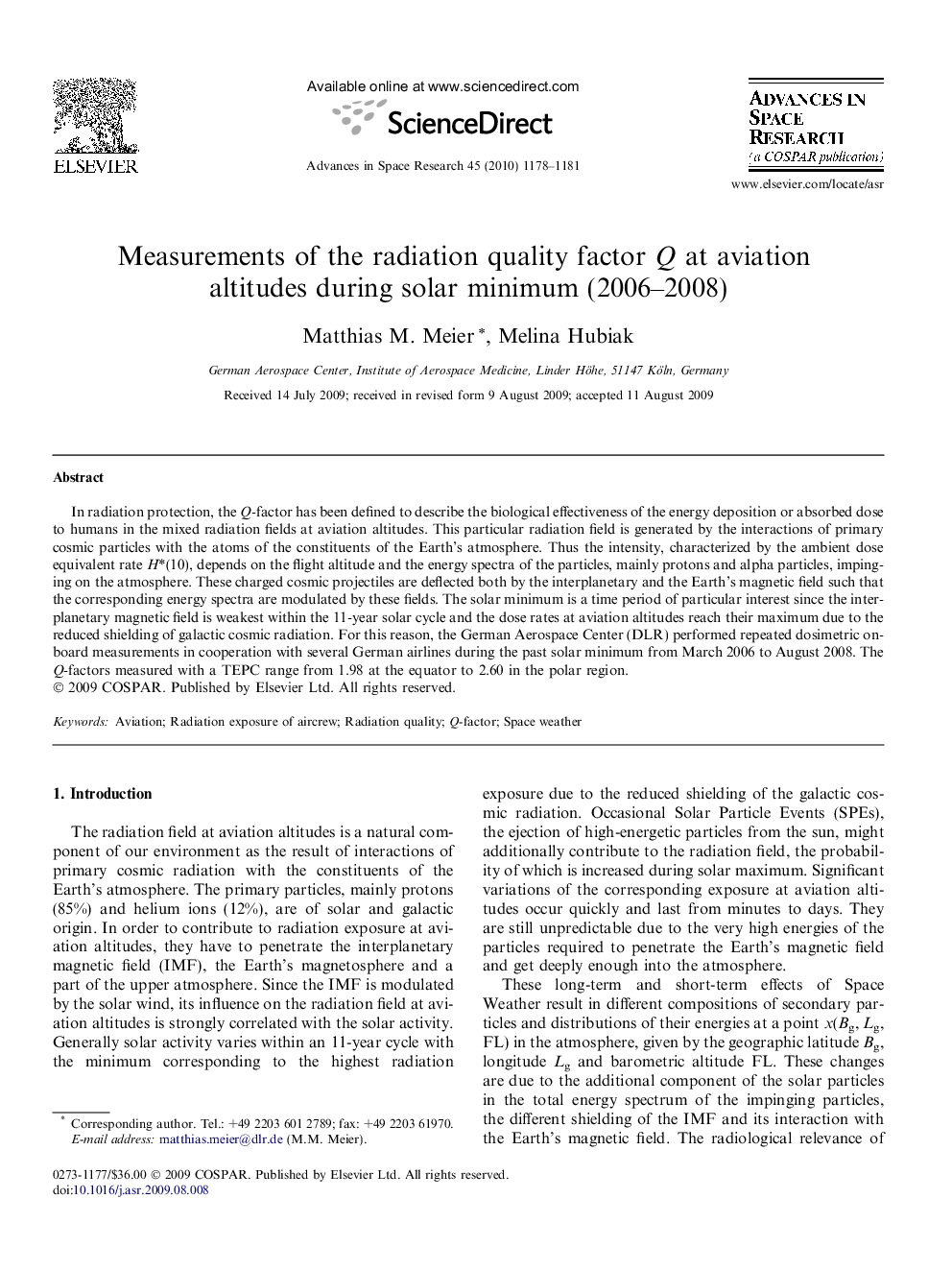| کد مقاله | کد نشریه | سال انتشار | مقاله انگلیسی | نسخه تمام متن |
|---|---|---|---|---|
| 1765629 | 1020110 | 2010 | 4 صفحه PDF | دانلود رایگان |

In radiation protection, the Q-factor has been defined to describe the biological effectiveness of the energy deposition or absorbed dose to humans in the mixed radiation fields at aviation altitudes. This particular radiation field is generated by the interactions of primary cosmic particles with the atoms of the constituents of the Earth’s atmosphere. Thus the intensity, characterized by the ambient dose equivalent rate H∗(10), depends on the flight altitude and the energy spectra of the particles, mainly protons and alpha particles, impinging on the atmosphere. These charged cosmic projectiles are deflected both by the interplanetary and the Earth’s magnetic field such that the corresponding energy spectra are modulated by these fields. The solar minimum is a time period of particular interest since the interplanetary magnetic field is weakest within the 11-year solar cycle and the dose rates at aviation altitudes reach their maximum due to the reduced shielding of galactic cosmic radiation. For this reason, the German Aerospace Center (DLR) performed repeated dosimetric on-board measurements in cooperation with several German airlines during the past solar minimum from March 2006 to August 2008. The Q-factors measured with a TEPC range from 1.98 at the equator to 2.60 in the polar region.
Journal: Advances in Space Research - Volume 45, Issue 9, 3 May 2010, Pages 1178–1181